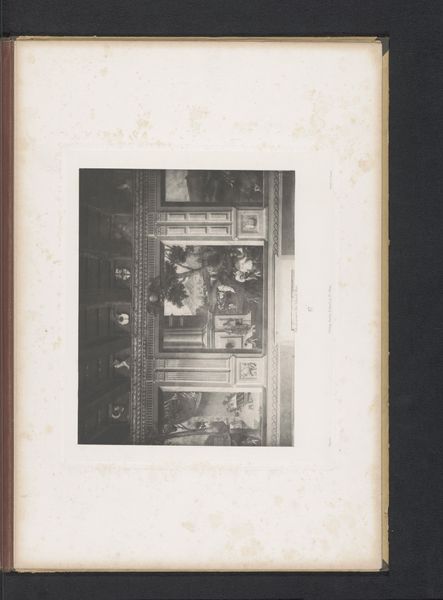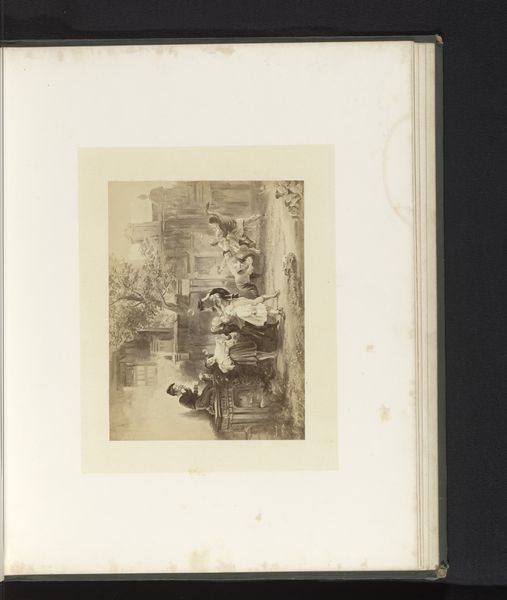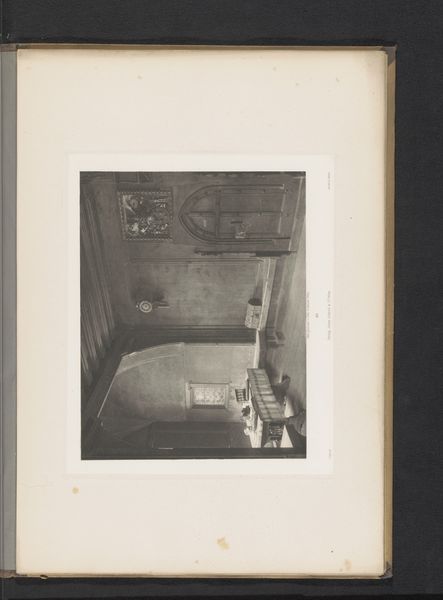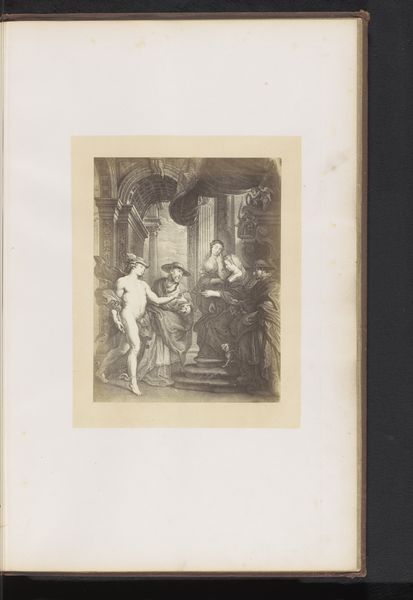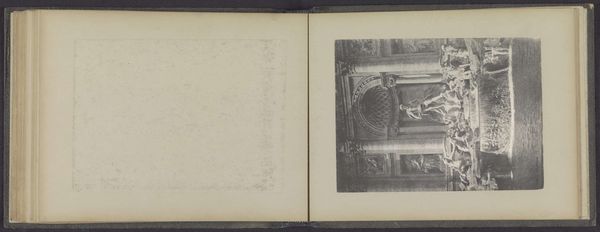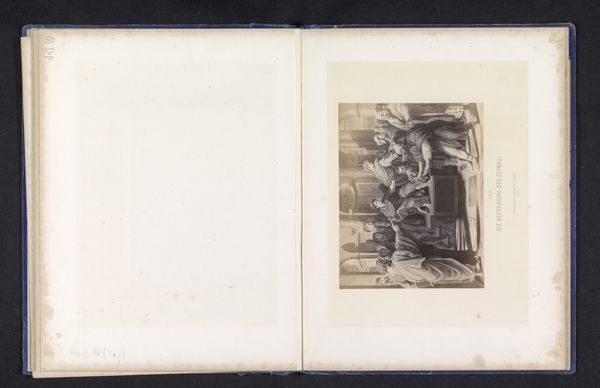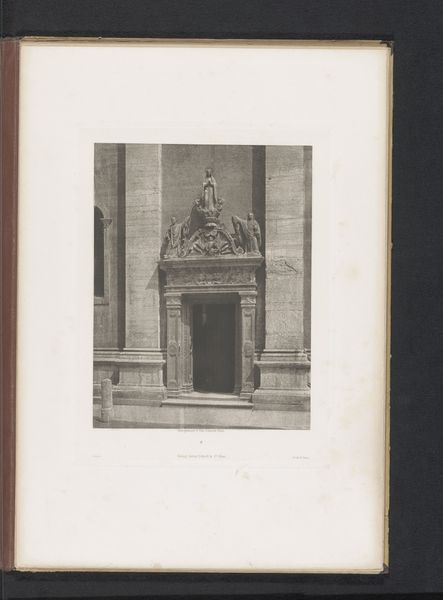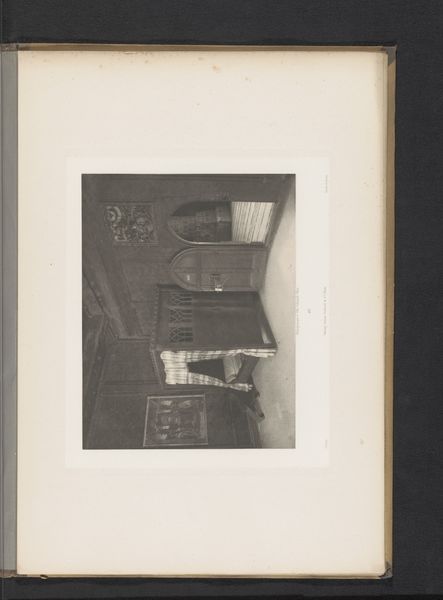
print, photography, gelatin-silver-print
# print
#
landscape
#
paper texture
#
photography
#
geometric
#
gelatin-silver-print
#
genre-painting
Dimensions: height 187 mm, width 238 mm
Copyright: Rijks Museum: Open Domain
Curator: Here we have Otto Schmidt's gelatin-silver print, taken before 1893, depicting "Bronzen standbeelden in de Hofkerk in Innsbruck, Oostenrijk"—Bronze statues in the Court Church, Innsbruck, Austria. Editor: Immediately, the oppressive weight of the space strikes me. The light is cold, almost spectral, and the looming figures seem to be watching, judging. Curator: Considering the historical context, the weight you feel might not be accidental. This church houses the tomb of Emperor Maximilian I, surrounded by twenty-eight larger-than-life bronze statues of his ancestors and heroes. Schmidt’s print captures the deliberate display of power and lineage meant to reinforce Habsburg authority. Editor: Bronze as a medium always speaks to immortality and commemoration. Seeing these figures frozen in time, almost hyper-real in their detail, evokes a deep cultural memory around leadership and the burdens they bear…or claim to. I can’t help but notice the columns which, along with the statues, point almost religiously upwards. Curator: The verticality of the architecture certainly emphasizes hierarchy, mirroring the rigid social structures of the time. It's interesting to consider who was allowed, even invited, to partake in such spaces. Schmidt, capturing it on a reproducible medium like photography opens avenues for wider access and perhaps, critique. How do we, as contemporary viewers, engage with the values these symbols project? Editor: The symbols embedded here offer a potent look into how imperial power was constructed. We are made to contemplate not just their presence in the past, but their legacy in the present. The stoicism etched onto those faces are telling, yet what lies beneath? Do we truly know what values and motivations drove such power, and how those legacies are affecting populations across the globe today? Curator: It makes me think of how power is presented and reinforced by institutions. Considering how this church was originally designed in the 16th century to act as an emotional hook for imperial political power allows Schmidt's image to highlight that very tension. Editor: The photograph invites introspection beyond its mere aesthetics. Its symbolism serves as a continuous reference, with potential emotional echoes in our own experiences. The church interior with its figures, freezes not only moments, but more importantly questions.
Comments
No comments
Be the first to comment and join the conversation on the ultimate creative platform.
